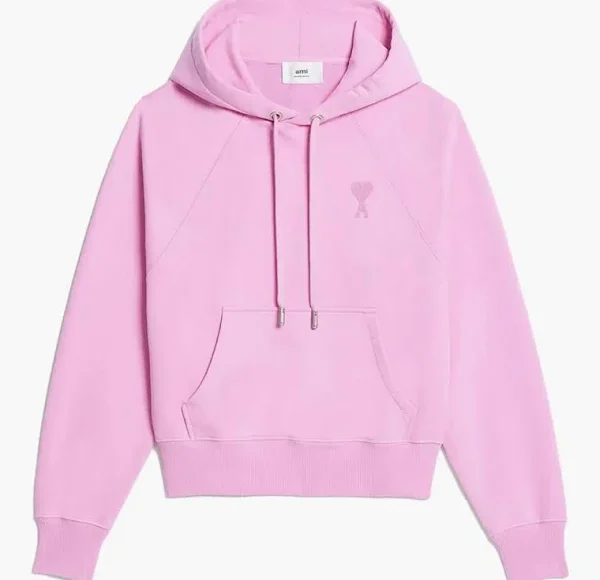Introduction to Social Media Influencer Marketing
In the ever-evolving landscape of digital marketing, social media influencer marketing has emerged as a game-changing strategy for brands aiming to build trust, boost engagement, and drive conversions. Rather than relying solely on traditional advertising, brands are now turning to influencers—individuals with a loyal online following who can authentically promote their products or services. From fashion and beauty to tech and fitness, influencers have become the bridge between companies and consumers in almost every industry.
What Is Social Media Influencer Marketing?
Social media influencer marketing is a form of marketing that involves partnerships between brands and influencers—individuals who have established credibility, trust, and a loyal audience on platforms like Instagram, YouTube, TikTok, Twitter, and Facebook. These influencers use their content creation skills and personal brand to endorse products or services, subtly weaving them into their content in a way that resonates with their audience. Influencer marketing stands out because it capitalizes on social proof. When followers see someone they trust endorsing a brand, they are more likely to explore and eventually purchase from that brand.
The Evolution of Influencer Marketing
Influencer marketing is not a new concept. In fact, celebrity endorsements date back to the early days of traditional media. However, the rise of social media has democratized influence. Now, anyone with a smartphone, creativity, and consistency can become an influencer. Micro-influencers (1,000 to 100,000 followers) and nano-influencers (less than 10,000 followers) have carved a niche for themselves with high engagement rates and hyper-targeted audiences. These smaller influencers often enjoy stronger personal connections with their followers, which translates into higher trust and better conversion rates for the brands they promote.
Why Brands Choose Influencer Marketing
There are several compelling reasons why brands are investing heavily in social media influencer marketing. Firstly, it offers unmatched authenticity. Consumers are more likely to trust a recommendation from someone they follow than a traditional advertisement. Secondly, influencer marketing offers niche targeting. Brands can partner with influencers whose followers match their target demographics. Whether it’s vegan skincare, minimalist home decor, or adventure travel gear, there’s an influencer for every niche. Thirdly, influencer marketing is highly cost-effective compared to traditional media. With proper planning, even small businesses can reap significant ROI from micro or nano influencers.
The Role of Influencer Marketing Platforms
To streamline collaborations and track results, many businesses use influencer marketing platforms. These tools help in identifying suitable influencers, managing contracts, tracking campaign performance, and even ensuring compliance with advertising regulations. Popular platforms like AspireIQ, Upfluence, Influencity, and CreatorIQ have made it easier than ever for brands to connect with influencers across different industries and geographies. These platforms also help in calculating key metrics such as engagement rate, impressions, reach, and ROI, enabling brands to make data-driven decisions for future campaigns.
Types of Influencers in the Marketing Ecosystem
Influencers can be categorized based on their follower count and niche. Mega-influencers (over 1 million followers) often include celebrities and top-tier content creators. While they provide huge reach, they may have lower engagement rates and charge higher fees. Macro-influencers (100,000 to 1 million followers) are experts or personalities in a specific field, offering a balance of reach and engagement. Micro-influencers (1,000 to 100,000 followers) tend to have a highly engaged and loyal following, ideal for targeted campaigns. Nano-influencers (under 10,000 followers) may seem small in scale but often have the highest engagement rates and authentic relationships with their followers. Choosing the right type of influencer depends on the brand’s goals, budget, and audience.
Popular Platforms for Influencer Marketing
Influencer marketing thrives across multiple social media platforms. Instagram remains a favorite due to its visual nature and features like Stories, Reels, and IGTV. YouTube is powerful for long-form video content, tutorials, unboxings, and product reviews. TikTok has exploded in popularity, especially among Gen Z, offering creative, short-form videos that can quickly go viral. Twitter is used for real-time updates, trending topics, and niche conversations. Facebook, though slightly less popular for influencer marketing, is still valuable for its vast user base and group communities. LinkedIn influencers cater to professional audiences, making the platform suitable for B2B campaigns.
Benefits of Social Media Influencer Marketing
The advantages of social media influencer marketing are numerous. Firstly, it drives brand awareness. Influencers expose their followers to your brand, increasing visibility. Secondly, it enhances credibility. People trust recommendations from those they admire, which builds brand trust. Thirdly, it increases engagement. Influencers generate discussions, shares, likes, and comments around your product or service. Fourthly, it improves SEO and online presence. Influencers often link to your website or product page, driving traffic and boosting search rankings. Lastly, it drives sales. Well-executed influencer campaigns directly impact purchasing decisions, resulting in increased revenue.
Challenges in Influencer Marketing and How to Overcome Them
Despite its benefits, influencer marketing does come with challenges. One major issue is fake followers. Some influencers inflate their numbers using bots, which leads to low engagement and poor ROI. To overcome this, brands should focus on engagement rate, audience authenticity, and use influencer platforms that verify profiles. Another challenge is brand-influencer mismatch. A poor fit can dilute your message and affect your brand reputation. Brands should ensure values align and that the influencer has genuine interest in the product. Additionally, tracking ROI can be complex. Using UTM parameters, discount codes, affiliate links, and analytics tools can help track conversions. Compliance is also critical. Influencers must disclose sponsored content as per FTC guidelines to maintain transparency.
How to Create a Successful Influencer Marketing Campaign
Creating a successful influencer marketing campaign involves several steps. The first step is goal setting. Define what you want—brand awareness, engagement, leads, or sales. Second, identify your audience. Understand who you want to reach and where they spend time online. Third, choose the right influencers. Use platforms and tools to evaluate influencer performance and fit. Fourth, craft a compelling offer. Influencers should receive a fair incentive and clear guidelines. Fifth, create authentic content. Let influencers maintain their voice and creative freedom to keep content genuine. Sixth, monitor and optimize. Use analytics to track performance and tweak the strategy if needed. Finally, nurture long-term relationships. Influencer partnerships should not be one-time deals. Building long-term collaborations ensures consistency and stronger brand affinity.
Influencer Marketing for Small Businesses and Startups
Many assume that influencer marketing is only for big brands with massive budgets. However, social media influencer marketing can be a powerful tool for small businesses and startups. Micro and nano influencers offer affordable rates and strong local influence. Local food outlets, handmade product sellers, and fitness coaches often collaborate with local influencers to reach a specific geographic audience. Small businesses benefit from personalized storytelling and word-of-mouth credibility, which is often stronger than high-budget campaigns. Even gifting a free product or offering an affiliate commission can kickstart effective influencer partnerships for startups.
Trends Shaping the Future of Influencer Marketing
The future of social media influencer marketing is shaped by several exciting trends. First, the rise of video-first platforms like TikTok and YouTube Shorts is changing how brands create content. Short, snackable videos with viral potential are in high demand. Second, the emphasis on authenticity is increasing. Audiences prefer real, unfiltered content over polished ads. Third, social commerce is growing. Platforms like Instagram and TikTok now allow in-app purchases, making influencer campaigns directly shoppable. Fourth, AI and automation are making it easier to find influencers and analyze performance. Fifth, long-term ambassador programs are replacing one-off posts, creating consistent brand storytelling over time.
Measuring the ROI of Influencer Marketing
Measuring the return on investment (ROI) of influencer marketing can be complex but is essential. Key performance indicators (KPIs) include engagement rate (likes, comments, shares), reach and impressions (how many people saw the content), website traffic (using UTM parameters), conversions (tracked through discount codes or affiliate links), and sentiment analysis (gauging audience reactions). Brands should define these KPIs in advance and use analytics tools like Google Analytics, Instagram Insights, or influencer platforms for tracking. Understanding ROI helps justify spending and refine future campaigns for better outcomes.
Influencer Marketing Success Stories
Several brands have achieved massive success through influencer marketing. Daniel Wellington, a watch brand, grew rapidly by partnering with thousands of micro-influencers. Their strategy of gifting watches in exchange for shout-outs helped them gain global recognition. Another example is Gymshark, a fitness apparel brand that built its empire by collaborating with fitness influencers on Instagram and YouTube. Similarly, Glossier, a beauty brand, encouraged real users and micro-influencers to share reviews, creating a community-led marketing approach that turned followers into loyal customers. These success stories show that influencer marketing, when done right, can deliver exponential growth.
Influencer Marketing vs Traditional Marketing
Unlike traditional marketing that pushes products through TV, radio, or print, influencer marketing pulls customers by building trust and emotional connection. Traditional marketing is often perceived as intrusive, while influencer content blends seamlessly into a user’s feed. Influencer marketing is also more measurable and cost-effective. A single Instagram Story or YouTube mention can generate better engagement than a billboard or TV ad. Moreover, influencer marketing is more agile. Campaigns can be launched quickly and adapted in real-time based on performance data.
Conclusion: The Future Is Influencer-Led
Social media influencer marketing is no longer a trend—it’s a dominant force in the marketing world. With consumers craving authenticity, connection, and value, influencers provide the human touch that traditional ads often lack. Whether you’re a small business looking for local outreach or a global brand aiming for mass exposure, influencer marketing offers a scalable, effective, and ROI-driven solution. The key to success lies in choosing the right influencers, setting clear goals, and prioritizing authenticity. As social media platforms evolve and consumer behaviors shift, brands that embrace influencer marketing will be best positioned to thrive in the digital era.















Leave a comment